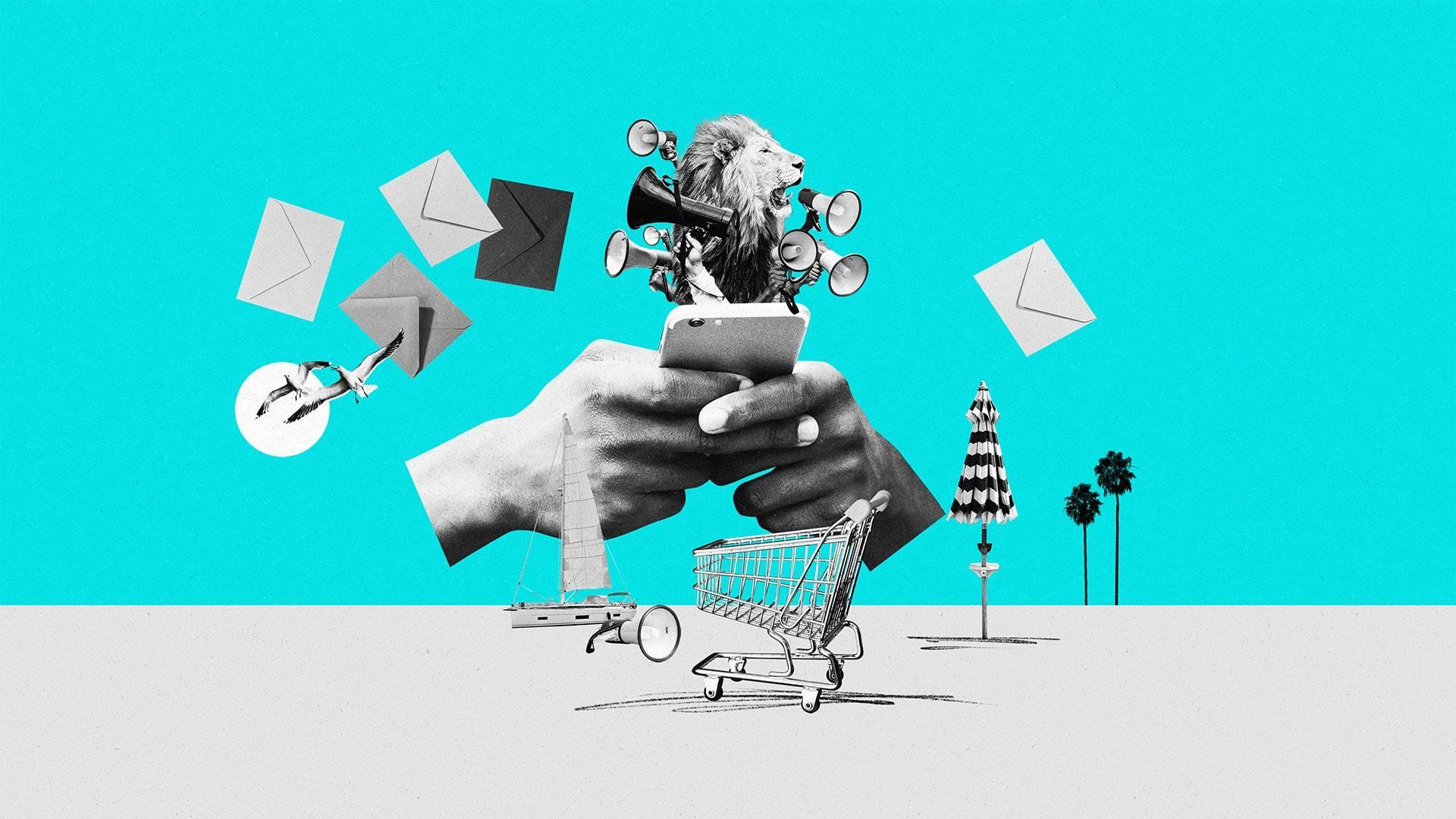A new sustainable marketing study shows how to reach coveted Gen Zers

A newly released cross-vertical study by NYU Stern Center for Sustainable Business and PR firm Edelman confirmed what many marketers probably already knew about sustainability: Consumers are more willing to hear about sustainable products if they benefit from them too.
The study, the findings of which were announced at the Cannes Lions International Festival of Creativity on Thursday, found that when consumers are hit with sustainability messaging that claims to improve their health, wealth, or community, a brand’s appeal significantly increased, compared to when a brand goes out with a category claim alone.
“That is indeed quite an important finding, because that means that [sustainability] actually sells more product,” said Christina Bauer-Plank, global vice president of Hellmann’s and Dressings at Unilever, which took part in the study.
These insights could be especially important for brands as their attention turns to the coveted Gen Z, whose spending power is projected to surpass that of millennials in 2031. Gen Z’s focus on sustainability is set to affect brands of all sizes and industries.
“If a brand has a bad environmental record, you’re not going to do well with your future consumer,” said Randi Kronthal-Sacco, senior scholar at the NYU Stern Center for Sustainable Business.
And with the added context of global economic turbulence, getting the messaging right can also help marketers maximize the returns from their investments in an increasingly fragmented media landscape.
Health, wealth, and community
“Consumers are egocentric, so we need to provide them sustainable benefits that are going to improve their lives,” said Kronthal-Sacco. “And that’s sort of contrary to what sustainable marketers have thought about for the last 10, 15 years.”
Over the past decade, year over year, sustainable products and purchases have grown twice as fast as conventional products in the U.S., but they still only account for about 17 percent of the market, she added.
To infuse sustainable claims effectively into marketing messaging, Kronthal-Sacco suggested three “buckets”: health, wealth, and community. Mentioning the absence of harmful ingredients in food or skin care, for example, “resonated beautifully.”
Focusing on how a sustainable swap provided either more dollars in consumers’ pockets or better durability also worked well, whereas asking consumers to reduce energy consumption for a healthier planet “did terribly,” said Kronthal-Sacco.
And interestingly, claims like regeneratively grown ingredients came out “OKish, just below average” in the study, said Bauer-Plank. But when these claims were paired with talking about working with local farmers, suddenly those claims “became supercharged.”
When it came to Gen Z, however, the picture looked different.
“Gen Z seemed to be the one generation that doesn’t necessarily focus on the ‘personal me.’ They did care about water and carbon and greenhouse gases and packaging,” said Kronthal-Sacco.
But she also noted that it made sense: Gen Zers saw all those factors as personal, because that’s the world they will inherit.
For brands keen on showcasing their “green” credentials, then, it pays to craft sustainability messaging that addresses consumers’ pain points and desires, in addition to talking about the planet.
But that might not be enough, as developments in the way media is consumed in recent years mean that a more nuanced approach could be needed.
From subculture to pop culture
Sustainability wasn’t always on the verge of becoming a mainstream consumer movement. Years before brands of all shapes and sizes had a vegan-friendly product in their lineup or thought about decarbonizing their ad tech supply chain, some consumers on the fringes had already started to worry about the effects of consumerism on the planet.
“Everything we know about popular culture is this: It all started with a subculture. It all started fringe before it became cool,” said Dr. Marcus Collins, assistant professor of marketing at the Ross School of Business and former head of strategy at Wieden+Kennedy New York, during a panel at the Cannes Lions Festival.
From comic books to collectibles, from gaming to anime, hobbies that 20 years ago would have been seen as “geeky” are now driving billions of dollars in revenue for some of the world’s largest, and most beloved, companies.
Indeed, sustainability arguably started as a subculture. People like England’s King Charles were evangelizing on the topic as far back as 1970, with his speeches often drawing rebuke for being “anti-science.”
But reaching today’s subcultures, whether large or small, need not require a royal effort. Ellie Bamford, chief strategy officer for North America at Wunderman Thompson, said during the panel that the rise of subcultures coincided with the rise of streaming and media that cater to niches, such as TikTok, Reddit, and podcasts.
This multitude of channels provides brands with passionate audiences, often made up of younger Gen Z and millennial consumers who are ready and willing to embrace more sustainable brands.
However, the way brands go about it needs to be well thought out: It’s about building on cultural conversations with words and actions without copying others and committing fully when entering such conversations, said Bamford. “Don’t enter culture with shallow marketing moments that your organization cannot or will not back up.”
That might be sage advice in an age where every media dollar is scrutinized for maximum return on investment, whether that return is sales or increased brand affinity.
“Because of the hyperconnected, fragmented world in which we live in, the way in which we achieve popular culture changes,” said Collins. “Today, the most powerful brands are used as identity marks, but the brands of the future will be community marks. They’ll be tribal marks that we use to demarcate that we are a part of a thing, that I am one of you, that you are one of us.”
Subscribe to The Current
Subscribe to The Current